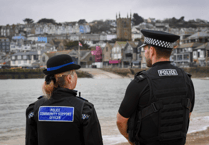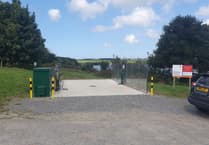ARCHEOLOGISTS working in Calstock believe they have found evidence of mining activity during the Roman times.
The site of the Roman fort discovered in 2007 and excavated over seven different years since then is continuing to throw up new information causing great excitement amongst experts and academics.
As the site next to St Andrew’s Church became the focus for a TV crew filming for the Great British Dig recently, new finds could mean the Roman fort, one of only three in Cornwall, could take on a greater significance in this part of the country.
Dig project director and research fellow at Exeter University Dr Chris Smart explained that mining material found at the site was going to be analysed but he was 99% sure it was from the Roman period.
‘If this turns out to be right and the dating is correct, this would be the only place in the South West of Britain where anyone has found evidence of mineral extraction during the Roman times.
‘Because this would have been a site of huge importance, it would explain why there was such a great miliary presence in the South West at that time.
‘It would be the first insight into the Romans engaging with mining in the South West, it’s really exciting.’
The excavation of the Roman fort at Calstock has embraced community involvement with around 80 volunteers taking part over the years. Open days for the general public have given people an opportunity to look around the fort and at the discoveries.
Children from local schools have visited the site with Calstock pupils returning last week to get involved with the latest dig.
The youngsters were excited to dig up pottery from 200 and 400 years ago, charcoal and glass.
Teacher Donna Kilpin said: ‘It’s about getting a hands on experience of history in the local area and understanding the landscape.
‘They have heard about the Great British Dig and seen the drone down by the river and the film cameras.
‘Calstock has so much history with all the mining but the Roman fort here is something extra special.’
The latest dig which saw new trenches excavated was paid for by the TV company who worked with contractors from York Archeological Trust.
The episode of the Great British Dig featuring Calstock will be shown in February/March time next year giving a greater insight into the Romans in Cornwall and an understanding of what it would have been like to live at the fort.
Dr Smart, who was one of a team of Exeter University archeologists to discover the fort unexpectedly 15 years ago whilst investigating medieval silver mining on the other side of the river at Bere Ferrers, said new funding would need to be found to continue the dig at the Calstock Roman fort.
Excavations cost tens of thousands of pounds, he said, but the next step would be to do some relatively low cost big area surveys of the fields to the west and east to give the team an idea of different activity and whether any of it related to the Roman period.





Comments
This article has no comments yet. Be the first to leave a comment.